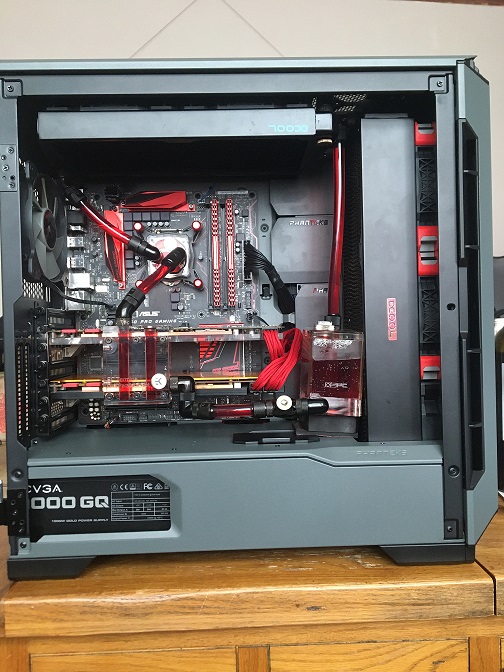markdotgooley wrote:Mxyzptlk wrote:I’m running 2 2060’s in one computer. The upper one runs at around 64c and the lower one at 54c. Fan noise is minimal but I am power limiting them with MSI Afterburner without much ppd loss. I found that my case wasn’t very airflow friendly even though I had 2 140mm fans in the front. I modified my case with a 140 x 280 hole in the front of it and mounted a magnetic filter there. That made all the difference and I’m running an AMD 2700X with a Noctua Air cooler as well.
I don't know what I'm doing wrong, as with a similar setup (two 2060s) the upper one runs near 80C at load and the lower over 70C... lots of fans on the case but maybe misplaced...
It'll depend on a few factors,
1- No one gets 60C or below without first setting the fan speed to 100% (or close to). Quite often setting them just below being annoying in loudness, as long as it's faster from the auto settings can save you several degrees! (in my case, upping the speed to 80% is almost inaudible, and cools sufficiently).
2- Many people cut power to the Nvidia GPUs. They're tuned for maximum performance. If you tune them like a mobile GPU, you can often save between 40 and 60% of power, with less than 2 to 10% performance!
3- Of course getting ambient temps down is a big part as well. For many people, who run their GPUs in an enclosed PC case, more intake fans are recommended. Others just open one side of the case, allowing the GPUs and PC internals to exhaust the air inside the room, which is potentially even better than many case fans.
A third option is to duct the air, which is the most efficient. Use spare materials like paper, tape, to create contraptions that will rout the heat out the back, and supply fresh air from the front. Slightly better than the above 2. I usually try to focus the hot air on the back of the PC where also the PSU exits the hot air.
And often put the PSU upside down, so it'll suck hot air from the CPU out the case, rather than have it use outside air to keep itself cool.
If your PSU has 25 to 50% higher power handling than you are actually using, this setup will work fine!
Another is to run your system in an open bench (motherboard horizonal, GPUs mounted vertically). This is a big improvement!
Or, do what I do, use PCIE risers, and mount the top GPU horizontally, while the bottom GPU is mounted vertically on the motherboard on an open bench.
That way the top GPU isn't restricted in getting fresh air by the bottom GPU.
Additionally I use a box fan, with a hepa (or you can also use a paper) filter behind it.
This allows me to run 2080Ti GPUs at 220W at temperatures below 70C at 85F ambient. and sometimes they drop as low as 48C, depending on ambient.
Sure, there are other options (like have an AC unit blow over the system), but the cost of keeping an ac unit cool your pc might cost more than the folding itself on electricity.
For most people, lowering the power, and playing around with some tape, fan speed, paper or cardboard ducting, can give great efficiency improvements!
While the GPUs run slightly slower because of capping the power, they also gain speed for running lower in temperature.
Most people who report temps below 60C, prefer triple fan designs on their GPUs.
If triple aren't available, they go with dual fan designs.
But the single fan designs are often not good enough to cool GPUs much beyond 100W.
